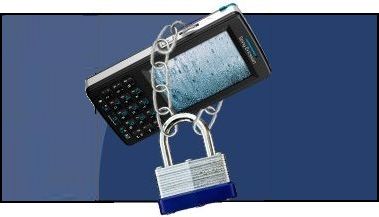Continued from page 1
On top of that, new hardware is introducing an additional security factor into the password process. Intel Identity Protection Technology embeds a token that creates a six-digit number, valid for 30 seconds, that acts as a second password. Hewlett-Packard’s new EliteBook p-series includes a fingerprint reader and proprietary face-recognition software that scans the user’s features via the webcam. Other dual-factor password systems require the user carry a token or key-fob that generates a new secondary code every few seconds or minutes.
Virtualisation and isolation are other strategies employable to make remote access a safer proposition for companies. “Isolated virtual machines allow IT to compartmentalise different spheres of operation. Now I can create spheres where workers manage their corporate email accounts and connections to the CRM to do their real work,” Quillin said. “The idea and advantage of that architecture is now you’ve created isolation between work and personal tasks, and isolation enhances security.”
 Still another security issue involves keeping up-to-date on which remote workers can access their corporate network from offsite. “I hear almost every day about people forgetting to deactivate employees after they leave the company,” NCP’s Hack told eWEEK. “The biggest security breaches over the past five years were attributable to people still having VPN access.”
Still another security issue involves keeping up-to-date on which remote workers can access their corporate network from offsite. “I hear almost every day about people forgetting to deactivate employees after they leave the company,” NCP’s Hack told eWEEK. “The biggest security breaches over the past five years were attributable to people still having VPN access.”
Businesses with large numbers of remote employees can find themselves forced to periodically cull those access lists by hand, painstakingly deleting ex-employees one at a time. Introducing a management system that keeps tabs on employees and their access, though, can limit the time and hours spent on that sort of security maintenance.
Managing complexity
That fits with the second issue confronting IT administrators in this new paradigm: complexity, and the ways it can be winnowed from ever-expanding remote-access networks.
“Corporate IT is saying, ‘Oh man, I’m already stretched to the gills, and you’re bringing in these other smartphones and PBX and password issues and administrative issues,’ and it’s an unwelcome burden on them,” said Kevin Gavin, chief marketing officer for ShoreTel, a purveyor of unified communications. “They see it as a potential nightmare that adds to their increasingly complex infrastructure.
“The vendor that wins is the one that makes it simple,” he added. “Consider the complexity factor: when systems are complicated, they’re more costly to manage. But there’s a more enlightened group of IT users out there who are asking: Why does it have to be so complicated?”
A simplified system also has the benefit of appealing more to both IT administrators and end users, which can help increase the rapidity of a remote-access solution’s adoption into both SMBs and the enterprise. That requires a drive from within IT to streamline the component chain involved in remote access, or giving serious consideration to porting associated applications to the cloud.
“I think it’s a combination of awareness and, at the same time, making the life of the end users as seamless and easy as possible: not seven to 10 clicks to get to the VPN connection, but one click,” Hack said. “We’ve seen the best results come with making it easy, where the user has a good feeling.”
But more and more, employees want to bring their personal tech into the enterprise – or else have their IT department procure the latest and greatest consumer devices for business use. The proliferation of tablets and smartphones throughout the enterprise virtually ensures a certain amount of complexity built into the system, no matter how strong the efforts to minimise it. In the end, IT administrators may find themselves forced to select from a smaller number of platforms to support – particularly when it comes to developing proprietary applications that allow employees to perform company-specific functions from a remote location.
“We’re a small example of what companies have to do now, in terms of selecting a winner,” said Chris Fleck, vice president of solutions development for Citrix Systems. “For companies trying to figure out whether they’re going to build internal applications for their employees, should they bet on iOS and Android and PlayBook? It’s a challenge. Do you quadruple your development effort? That’s a real challenge.”
Remote access is here to stay
That challenge has led to some companies adopting a wait-and-see attitude toward iOS and Android. Vendors like Citrix also offer solutions that give remote workers ubiquitous access to applications from a broad range of devices.
In the end, the solution for many of the complexity issues associated with remote access may lie in the cloud, with services that spare IT administrators the costs and time associated with managing on-premises support for workers’ devices in the field. Whatever the ultimate solution, though, it is clear that remote access is not only here to stay as a business model, but also burgeoning in popularity – and in the process, becoming a major topic for IT shops everywhere.





